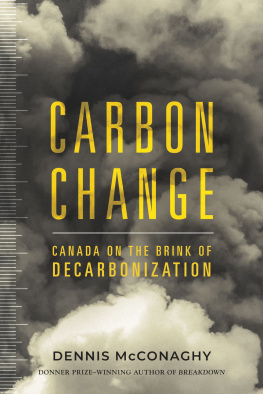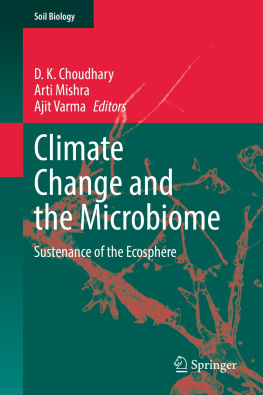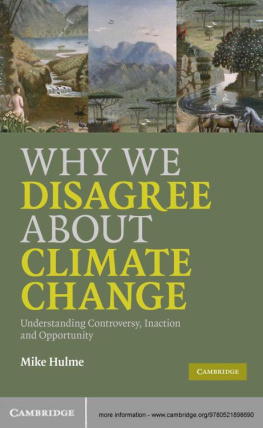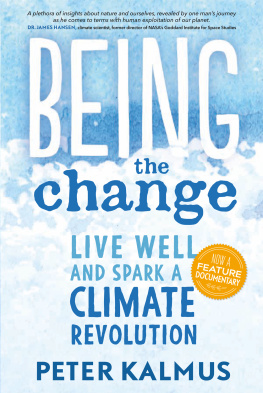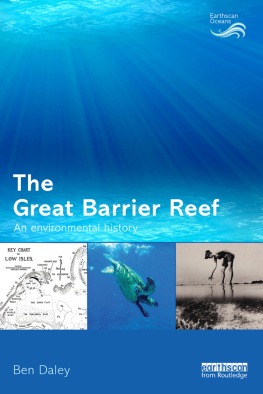Henighan - A green reef: the impact of climate change
Here you can read online Henighan - A green reef: the impact of climate change full text of the book (entire story) in english for free. Download pdf and epub, get meaning, cover and reviews about this ebook. City: Westmount;Québec, year: 2015;2013, publisher: Linda Leith Publishing, genre: Romance novel. Description of the work, (preface) as well as reviews are available. Best literature library LitArk.com created for fans of good reading and offers a wide selection of genres:
Romance novel
Science fiction
Adventure
Detective
Science
History
Home and family
Prose
Art
Politics
Computer
Non-fiction
Religion
Business
Children
Humor
Choose a favorite category and find really read worthwhile books. Enjoy immersion in the world of imagination, feel the emotions of the characters or learn something new for yourself, make an fascinating discovery.
- Book:A green reef: the impact of climate change
- Author:
- Publisher:Linda Leith Publishing
- Genre:
- Year:2015;2013
- City:Westmount;Québec
- Rating:5 / 5
- Favourites:Add to favourites
- Your mark:
- 100
- 1
- 2
- 3
- 4
- 5
A green reef: the impact of climate change: summary, description and annotation
We offer to read an annotation, description, summary or preface (depends on what the author of the book "A green reef: the impact of climate change" wrote himself). If you haven't found the necessary information about the book — write in the comments, we will try to find it.
Henighan: author's other books
Who wrote A green reef: the impact of climate change? Find out the surname, the name of the author of the book and a list of all author's works by series.
A green reef: the impact of climate change — read online for free the complete book (whole text) full work
Below is the text of the book, divided by pages. System saving the place of the last page read, allows you to conveniently read the book "A green reef: the impact of climate change" online for free, without having to search again every time where you left off. Put a bookmark, and you can go to the page where you finished reading at any time.
Font size:
Interval:
Bookmark:

A Green Reef
The Impact of Climate Change
Copyright 2013 Stephen Henighan and Alouette Verlag
Cover Photograph 2013 Ian McAllister
All rights reserved. No part of this book may be reproduced, for any reason or by any means, without permission in writing from the publisher.
Cover design: Debbie Geltner
Book design: WildElement.ca
Author photo: Erika de Vasconcelos
Library and Archives Canada Cataloguing in Publication
Henighan, Stephen, 1960-, author
A green reef : the impact of climate change / Stephen Henighan
Issued in print and electronic formats.
ISBN 978-1-927535-27-1 (pbk.).--ISBN 978-1-927535-28-8 (epub).--
ISBN 978-1-927535-29-5 (mobi).--ISBN 978-1-927535-30-1 (pdf)
1. Climatic changes. 2. Climate and civilization. 3. Nature--Effect
of human beings on. I. Title.
QC903.H44 2013 304.25 C2013-902014-4
C2013-902015-2
Legal Deposit Library and Archives Canada
et Bibliothque et archives nationales du Qubec
Linda Leith Publishing acknowledges the support of the
Canada Council for the Arts.
Printed and bound in Canada by Marquis Book Printing Inc.
.ll.
Linda Leith Publishing
P.O. Box 322, Station Victoria
Westmount QC H3Z 2V8 Canada
www.lindaleith.com
A Green Reef
The Impact of Climate Change
STEPHEN HENIGHAN
.ll.
CONTENTS
CHAPTER ONE
THE END OF ABUNDANCE
On the West Coast of Canada, natural abundance feels inevitable. The gigantic scale on which nature surrounds us persuades the observer that none of this could ever change: the trees, inlets, and animals seem to belong not to an evolving life-process, but to a fixed, postcard-like idea of grandeur. Yet, once we look closer, this world feels fragile. Behind the roadside ribbon of decency, maintained in order not to shock the public, stretch the gutted stumps of the clear-cuts. On a still morning, the gossamer mist breathed by the mysterious world of a northern rainforest mingles with the fumes that belch from a logging truck. A black bear ambles into the bush at the sound of a chainsaw. The eagles that used to whirl in the sky are scarce. Staring into the empty air, one thinks that if this place, where nature is more generous than anywhere else in the northern Americas, can turn bleak and stunted, no haven is secure.
I was introduced to the West Coast in 1984. Having finished university, I drove across the continent, sampling landscapes and cities, until I reached California. From there, there was nowhere to go but north. I turned in my Drive-Away car in Oakland and rode by bus to Oregon, Washington and British Columbia. I stayed with relatives in Victoria. On Canada Day I stared out past the exploding fireworks at the snowy peaks of the Olympic Mountains, across the Juan de Fuca Strait in Washington State. The shadowy cushion of snow, glimmering high in the sky on the clear July first evening, lay to the south of me, yet it beckoned me north.
Four days later I caught a 6 A.M. bus out of Victoria. It was a local bus as far as Nanaimo, where it became an express to Port Hardy on the Queen Charlotte Strait, near the top of Vancouver Island. This eight-hour trip was my introduction to the natural world of the West Coast. The journey began with a long, slow thrash through early-morning fog and dense firs. As the fog cleared, it unveiled foliage of a denser, darker green: a landscape of rainforest profusion and Nordic sturdiness. I thrilled at the passing glimpses of snow-dented peaks as the bus began to climb. Yet here, too, I received my first jolt. Many of the hillsides had been logged out and clear-cut. Nothing in the quaint streets and cultivated gardens of Victoria had prepared me for this careless destruction. The bus climbed almost imperceptibly to an ear-squeezing altitude. We descended past pink-orange rock facings, with shrubbery clinging to each fissure in the rock. The bus emerged into a landscape of gentler hillsides. Here, too, many of the slopes had been logged.
The visitors first encounter with the natural wealth of the West Coast is also an encounter with the threat to that wealth. In a place where people, though more numerous than they appear at first, are far less prevalent than trees or wild mammals, the pressure of human populations makes a glaring impact. The scramble for resources to satisfy the planets ever-multiplying hordes of humans stands out most starkly, as though by contrast, in areas where humans do not predominate. My trip north that summer became an apprenticeship in the idea a novel one to me at the time that nature, that ferocious tyrant who had dictated the lines of my life through the howling winters of my Central Canadian childhood, was in retreat before the demands of throngs of people.
I had arranged to meet a friend in Alaska. Today that friend is a prominent plant and wildlife biologist; then he was a graduate student, beginning his research. As I travelled north, I felt saturated by the natural world, yet penetrated by a keening melancholy. In Port Hardy I caught a ferry to Prince Rupert, where the MV Malaspina , destination Skagway, Alaska, waited at the next wharf. Down the quay, an enormous Japanese tanker was being washed down. Prince Rupert, a day closer to Japan than Vancouver, was already preparing to become the conduit for shipping Canadas raw materials to Asia. From here on, my experience of the natural world of the West Coast was filtered through the light of days that got longer and longer until they were nearly endless. At first these days were grey, in an infinite variety of muted pastel-like tones of glowing dimness. The towns where the Malaspina docked received more than 320 days of rain a year; in each outpost there was a wash of ramshackle wooden buildings along the waterfront, with the liquor store right in the middle. I had never felt more aware of the elements than I did sleeping under an overhang on the deck. The Inside Passage was cool, the water flat. A grey light filtered through the banks of permanent cloud from 5 a.m. to 10 p.m. with little change in intensity. The greyness waned into night. Jumbled hills, dark beneath the cloud, covered the foreground with spruce and hemlock stacked branch-to-branch for hundreds of kilometres. The mountains behind them might as well not have existed; seemed to exist only on maps. The sun was a rumour, the stillness enormous.
My friend, who lived in Anchorage, had driven two days to Haines, in the Alaska Panhandle to pick me up. From here we would drive over the Chilkat Pass, across a corner of British Columbia that had no road link to the rest of the province, into the Yukon, then back to Alaska, where we would spend a month hiking. As the ferry approached Haines, the cloud lifted. To the east, cliffs covered with spruce and cedars, seamed with waterfalls, plunged into the ocean; lingering cloud sliced off their tops. On the left black mountains, patched with snow, shot upward through the cloud. One of them cradled a glacier. From the deck, I saw my friend getting out of his battered Volkswagen Beetle.
I got a better sense of the landscape from the passenger seat of the Beetle than I had from the ferry: the swampy murk, bush and low hills in the foreground, the sheer complication of the land that culminated in the sought-after, often-concealed mountain peaks. During the next month, with the help of the Beetle, we went to lookouts where I saw glaciers floating in a bay, trails where we would hike up mountainsides to tread glacial moraines, feel the cold radiating off white-blue glaciers ruffled like frozen coral, then walk across them. We would camp in high, drizzly passes and ford icy rivers in bright sunlight. I saw dozens of caribou, foxes, and mountain goats, and squinted at ambling grizzly bears through binoculars. I watched the sun set at 1 A.M., skid along the horizon and swing up again a little more than an hour later. I had never before been in the presence of a landscape so vast and raw. I had never explored a place that seemed to be for animals and wilderness rather than people. Central Alaska did not have the quasi-tropical abundance of the British Columbia coastline. Its thin tundra and long patches of bare earth were a reminder that it would be all too easy for people to ruin this place. One afternoon, in Denali Park, we climbed to the top of a high spur from where we were able to watch a herd of caribou passing right below us. In the distance (but not too distant), a grizzly bear prowled on all fours along the crest of a ridge, surveying the open landscape in front of him. I took a backward step. My boot landed on a patch of crinkly green, not much larger than the palm of my hand, that spread over the brown earth.
Font size:
Interval:
Bookmark:
Similar books «A green reef: the impact of climate change»
Look at similar books to A green reef: the impact of climate change. We have selected literature similar in name and meaning in the hope of providing readers with more options to find new, interesting, not yet read works.
Discussion, reviews of the book A green reef: the impact of climate change and just readers' own opinions. Leave your comments, write what you think about the work, its meaning or the main characters. Specify what exactly you liked and what you didn't like, and why you think so.



